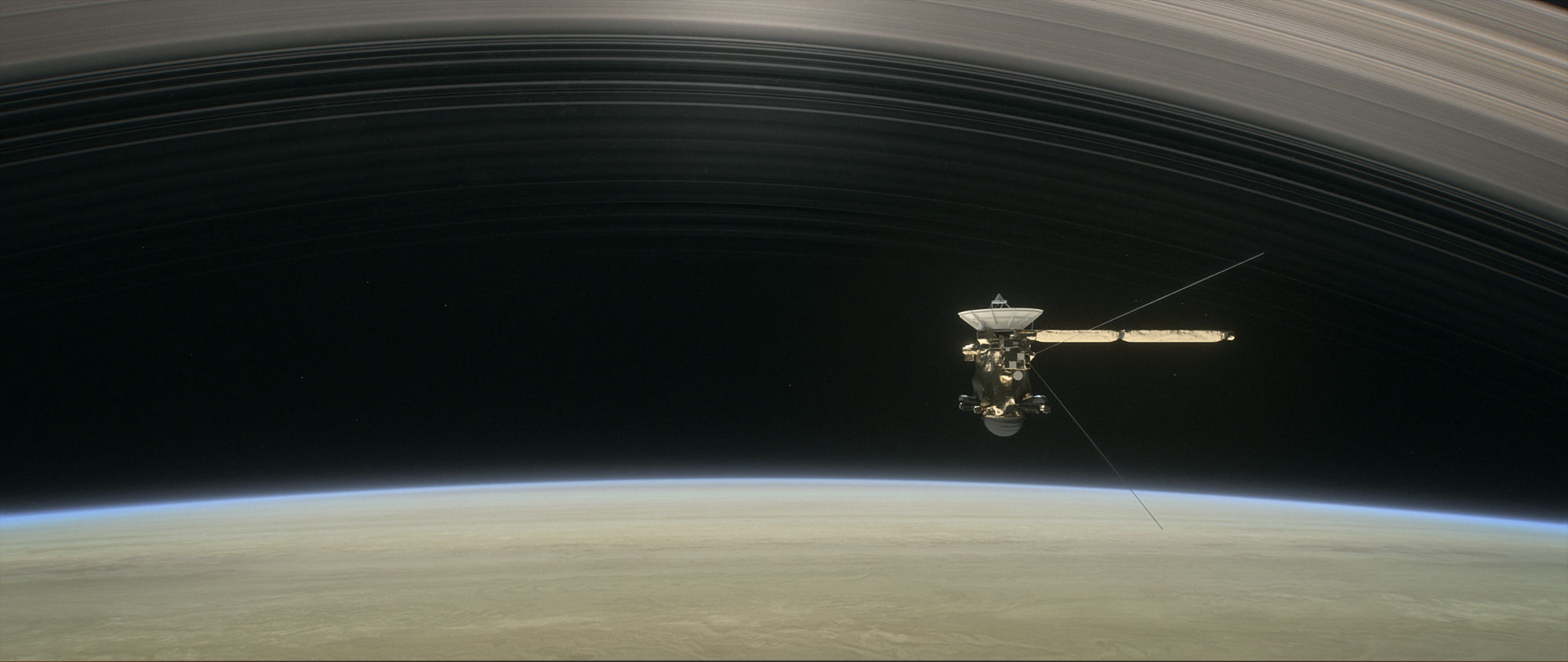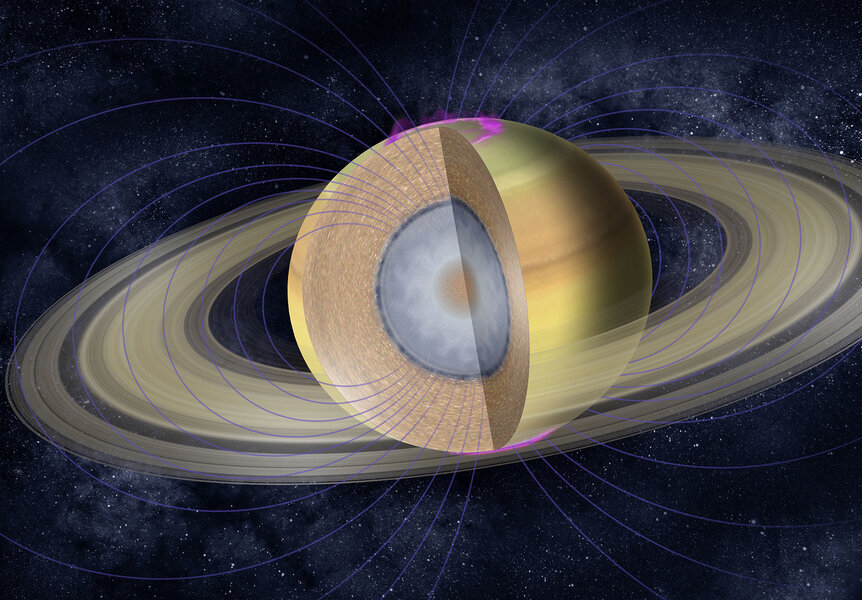Create a free profile to get unlimited access to exclusive videos, sweepstakes, and more!
Saturn's rings are way younger than the planet itself… and they're disappearing.

Saturn is a pretty weird place, full of mysteries that seem to multiply the more we investigate them. One of the biggest is literally one of the biggest things Saturn has: its rings. Surprisingly, despite them being the single most obvious and iconic feature of the planet, we don’t know the answers to two basic questions about them: How old are they, and how did they form?
But now, using data from the Cassini spacecraft and applying them to subtle models of the planet, scientists have determined an important fact about the rings: They’re young. Very young, far younger than the planet. While Saturn formed something like 4.5 billion years ago, the rings are likely no older than 100 million years.
So while the rings look permanent and timeless, they are almost certainly an ephemeral feature. They’ve only been around for a tiny fraction of the age of Saturn — just about 2% of its lifetime so far — which means the rings are a very recent phenomenon in the life of the planet.
So how did the scientists figure this out?
It has to do with the mass of the rings, how much stuff is in them. In a nutshell, if the rings are massive they are old, and if they are lower in mass they’re younger. This has to do mostly with erosion. Space isn’t really empty; there’s dust and other small particles whizzing around. Not much, but enough that over long periods of time they can have an effect. As these micrometeoroids smack into Saturn’s rings, they erode the water ice particles that make up the rings. Over time, the rings are worn down, with the smaller particles getting drawn into Saturn via various forces (gravity and magnetism). Given enough time, they’ll disappear entirely.
We have a pretty good handle on how much of that sandblasting material is out in space, so we know how quickly the rings are being eroded. If we can determine the mass of the rings, we can work that backwards to get an age estimate for them.
It turns out getting the ring mass is hard. But not impossible.
One way to get the mass of an object is fly a spacecraft past it. The path and speed of the spacecraft are affected by the gravity of the object, which depends on its mass. If you can measure that velocity with enough accuracy you can get the mass of the object.
Cassini orbited Saturn for 13 years, and its velocity could be measured to incredible accuracy, a fraction of a millimeter per second. However, up until the end of the mission its orbit was always outside the main rings, and that made it impossible to disentangle the mass of the rings from the planet (what you get is the mass of the rings plus the planet, and no way to separate them).
But then the mission endgame approached. Engineers put Cassini on a series of 22 deep dives over the tops of Saturn’s clouds, well below the rings. This made measuring the ring mass possible …
But not easy. They still had to understand the gravity of Saturn well enough remove it from the calculations (like noise-canceling headphones removing the background noise in a bar so you can hear someone close to you speaking). That turns out to be pretty hard! If you’re really far away from an object, the gravity field is smooth, and the total mass easy to find.
But if you’re close to that object, how much gravity you feel depends on how the mass is distributed in that object. Think of it this way: If you are standing on a plain on Earth the force of gravity will be different than if you’re standing near a mountain. That extra mass to the side will pull on you, changing the force.
Saturn has a lot of things that affect its gravity field. Most are easy enough to correct for (like the fact that Saturn is not spherical; its rapid spin makes it noticeably wider through the equator than through the poles). But its interior affects this as well, and that’s harder to understand. If you have a layer of gas rotating around Saturn faster than a layer above or below it, that changes the mass distribution, which in turn changes the shape of the gravitational field.
What the scientists examining the Cassini data found is that there is just such a layer, deep inside Saturn’s atmosphere. Extending down to a depth of about 9,000 kilometers is a massive layer of gas that doesn’t flow around the same way as the bulk of the atmosphere around it. By making some relatively simple assumptions about how this gas behaves, they are better able to match the observed Cassini data.
And by doing that they were able to account for Saturn’s gravity, and by doing that they were able to figure out the gravity from the rings, and therefore their mass.
They find that the mass of Saturn’s rings is 1.54 ± 0.49 x 1019 kg — about 1.5 quadrillion tons. That’s roughly 40% the mass of Saturn’s moon Mimas, which is about 400 km across.
That’s pretty small for such a grand thing as the rings, which are 300,000 km across! They have such a low mass that they must be young. Given the erosion rate, the scientists find they are somewhere between 10 and 100 million years old.
This is shocking. Different observations of the rings from Cassini show that at the current loss rate, the rings only have about 100 million years left before they disappear. In other words, out of the entire lifespan of the solar system so far, we’re pretty lucky to be able to see Saturn with rings at all! If the Jurassic dinosaurs had telescopes they would’ve seen Saturn quite naked. The rings didn’t yet exist!
Now that we know they didn’t form with the planet, it’s curious to think on what did create them. The fact that they are almost entirely water ice is a huge clue. Perhaps Saturn captured a stray icy object from the outer solar system, a giant comet or Centaur, which then was torn apart by Saturn’s immense gravity. It’s also possible they formed from the collision of two moons, shattered in the impact, which then spread out to form the rings.
The ring formation mechanism is a very interesting question, and one that we can now constrain a bit better, knowing the ring mass. Sometimes mysteries multiply when you look deeper, but sometimes you get an answer that helps you understand the next mystery down the line. In this case, we literally had to look deeper. But our understanding is now deeper, too.
Saturn is a favorite target of just about any human who has looked through a telescope’s eyepiece. It’s one of the biggest reasons I’m an astronomer at all! Those rings, even through a small ‘scope, look so perfect, so beautiful, so timeless.
But they’re not. This knowledge makes me a little sad, but I also know that the Universe is the way it is, and permanence is a vanishingly rare commodity. Far from diminishing my reaction to the rings, it makes me appreciate them all the more.
















